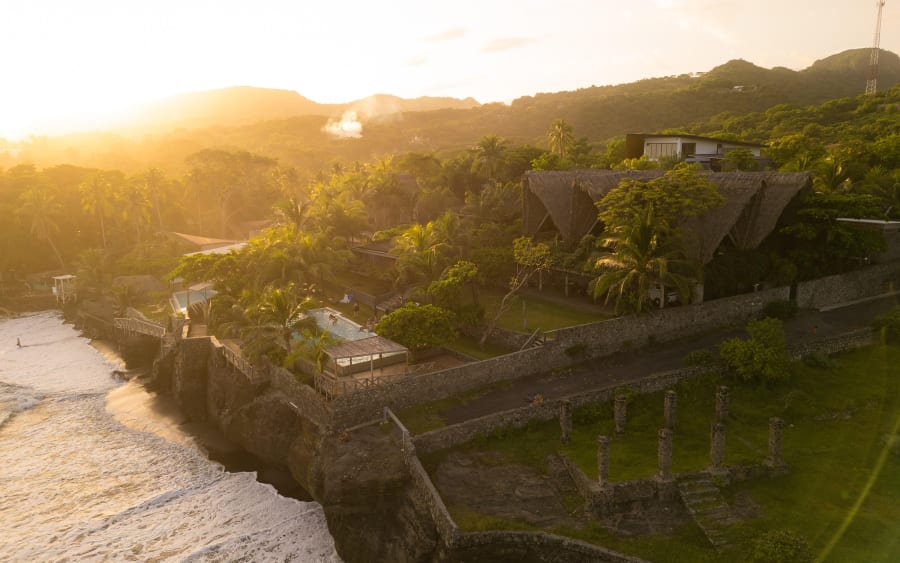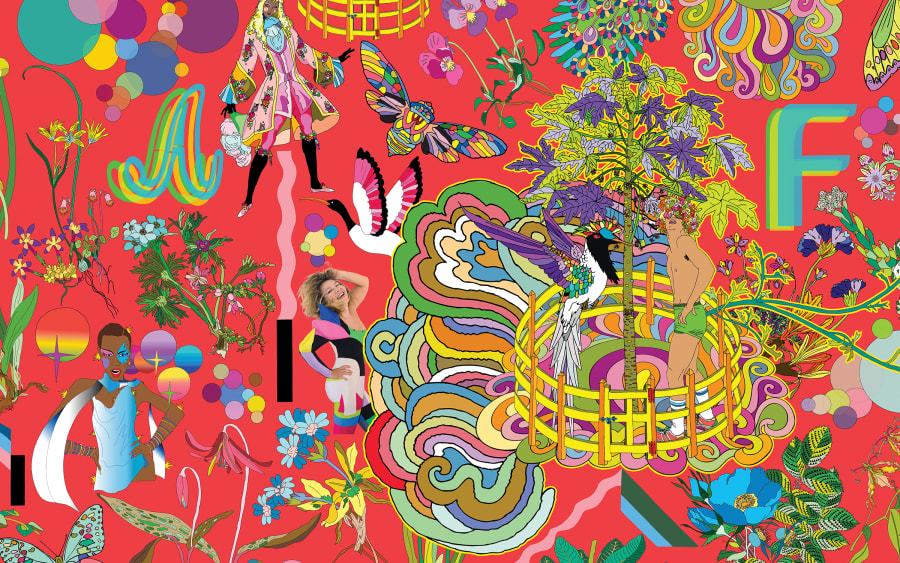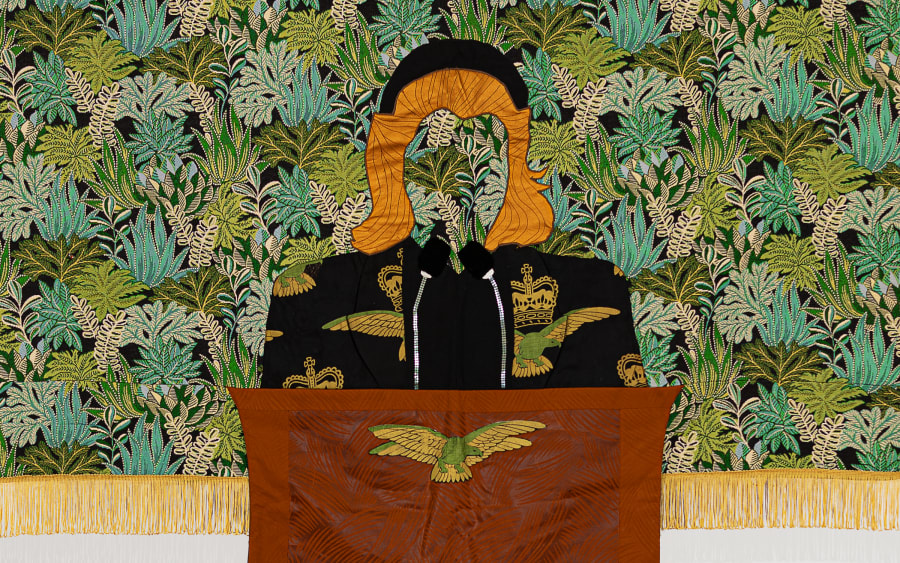Many collectors say they like to live surrounded by art, but few have a better claim to such an existence than César and Mima Reyes. While one of their two Puerto Rican homes is crammed, jam-packed, positively exploding with art from some of today’s biggest names, the second house was designed by Jorge Pardo and could be considered a piece of art itself.
And when one lives inside an artwork by Pardo, how much more ‘surrounded by art’ can one be?
‘He made it without windows,’ César Reyes says, ‘so you have all these sliding doors instead, and it’s a very cinematic feeling when you look outside. It’s very fresh, and it’s very open.’
This weekend home in Naguabo sits atop a hill that overlooks the sea and could, at first glance, be mistaken for any other. Pardo used materials common for homes in Puerto Rico, such as concrete and tile, and those ubiquitous metal grates that double as security and natural air conditioning.
Upon closer inspection, however, you’ll notice the vibrancy of the colors Pardo has selected - the intense red of the grating and the supple yellow of the tiles. Closer still, you notice bespoke details, like how the cabinets alternate these colors in the kitchen where Mima makes her meals or how light shines in a ‘mini-porthole‘ constellation in the bathroom.
‘When it is raining hard, water might come into the house,‘ César says, ‘but then you just move to another part of the house.’ What little art the couple has in Naguabo is waterproof, like a piece by Abraham Cruzvillegas made from many buoys that hangs from the ceiling.
The project came about during a visit to the 1996 edition of Skulptur Projekte Münster, where the Cuban American Pardo had created a pier made out of California redwood that reached out from a park and far into a lake, with a cigarette machine at the end of it. As it happened, the Reyeses had just acquired the land in Naguabo and wanted to see what Pardo might do with nature on a larger scale. Completed in 2004, it was the second home Pardo ever designed.
Since then, it has played host to César and Mima’s numerous artistic friends. Peter Doig’s Black Curtain (Towards Monkey Island), 2004, captures a view of that island, where rhesus monkeys constitute the primate population. It was a special trip to that island with César that inspired Chris Ofili to start his painting series of rhesus monkeys, telling The New Yorker’s Calvin Tomkins that the experience of visiting that island with César ‘just stayed in my mind.’
The Reyeses were early collectors of both artists, whose work can be found in their primary home in San Juan, alongside that of Rirkrit Tiravanija, Martin Creed, Issy Wood, Katherine Bradford, Danh Võ, Martine Syms, Petrit Halilaj, Yiyo Tirado Rivera, Rogelio Báez Vega, Radames Juni Figueroa, Celia Paul, Tomma Abts, Elisabeth Kley, Matt Paweski, Verne Dawson and Francisco Oller, an underrated friend to Paul Cézanne and the latest addition to the Reyes home. However, Oller’s still life of mangos did require some extensive bidding at Sotheby’s.
These world-famous artists appear alongside a number of up-and-comers, demonstrating that the Reyeses still have their fingers on the pulse and the yen to collect. ‘Nothing fits anymore,’ César admits.
The Old San Juan home dates to the mid-1800s, the colonial era when this section of the city was walled off, and footprints were limited. Consequently, the house has only around 1,500 square feet, though it also boasts 20-foot-tall ceilings so the work can climb high. The art may sometimes be hung frame to frame, but nothing feels too crowded because of this verticality, and this is how they like it anyway.
‘I’m just very visually oriented,’ César says. ‘It’s very stimulating to be so surrounded by art, and the history behind some of the paintings is very uplifting too.’
In both of their homes it’s apparent that art, for the Reyeses, is not a trophy but a totem to memories and experience.
César, a psychiatrist, first came to art when he befriended the Puerto Rican painter and sculptor Rafael Ferrer while at medical school in Philadelphia. Ferrer’s work now hangs on their walls in San Juan, of course, for it was Ferrer who advocated that César go to London rather than Barcelona for his semester abroad. There, César became interested in the School of London and began to collect Francis Bacon’s and Lucian Freud’s works on paper.
He began to wonder if he might start aiming younger, where there were still deals to be found.
Opening The New York Times one day in 1994, he saw a photo of Gavin Brown speaking on the phone and an appealing work behind him on the wall. That piece was by Doig, and the purchase marked the beginning of their fond friendship.
Still, César hesitates to attribute his many friendships with artists to his keen eye or lovely homes. The secret to his success in that regard, he said, is Mima’s cooking.
‘She’s the soul of the house,’ he says. ‘Without that, I don’t think a lot of artists would have wanted to come.’
This article was originally commissioned for the 2024 issue of the Art Basel Miami Beach Magazine.
Art Basel Miami Beach will take place from December 6 to 8, 2024. Learn more here.
Dan Duray is a writer, reporter, and editor from New York City. His work has appeared in The Economist, The New York Observer, Town & Country, the San Francisco CHRONICLE, Billboard, ARTnews, The Art Newspaper, Elle Decor.
Published on November 18, 2024.
All photos by Raquel Pérez Puig for Art Basel.


